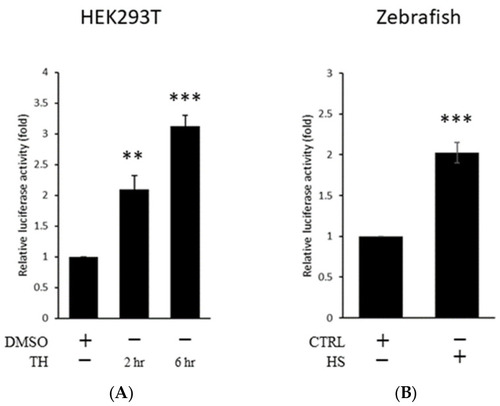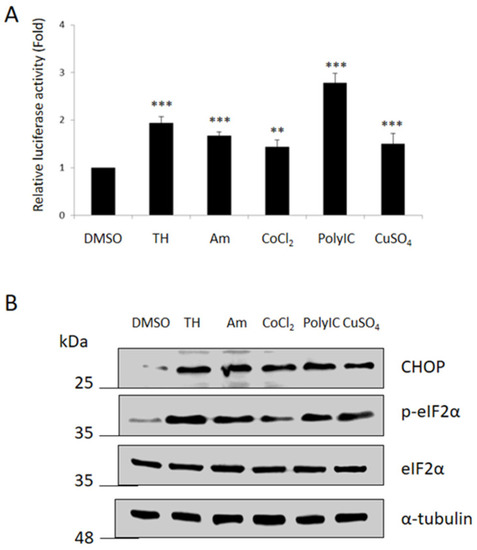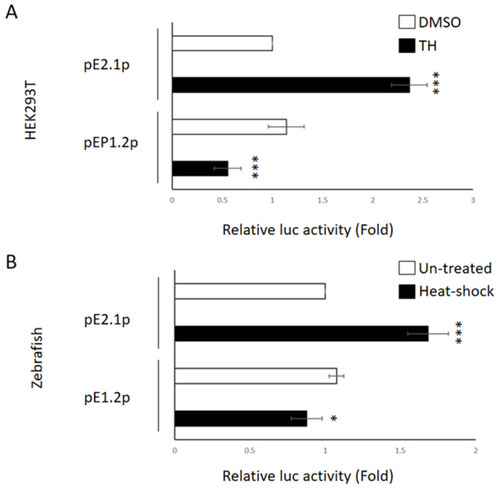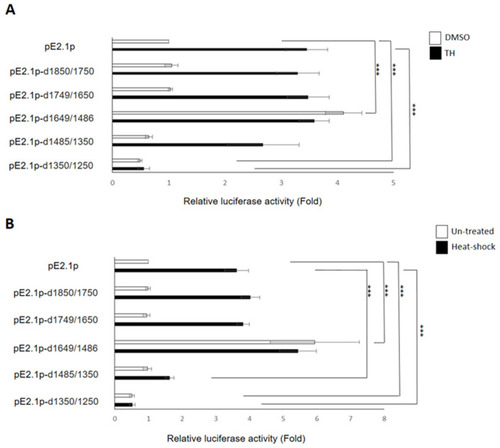- Title
-
The Upstream 1350~1250 Nucleotide Sequences of the Human ENDOU-1 Gene Contain Critical Cis-Elements Responsible for Upregulating Its Transcription during ER Stress
- Authors
- Lee, H.C., Chao, H.T., Lee, S.Y., Lin, C.Y., Tsai, H.J.
- Source
- Full text @ Int. J. Mol. Sci.
|
|
|
Promoter activity driven by the −2055~+77 DNA fragment of human |
|
Comparison of luc expression activity driven by the DNA fragments −2055~+77 and −1125~+77 of human |
|
Comparison of the promoter activity of |




